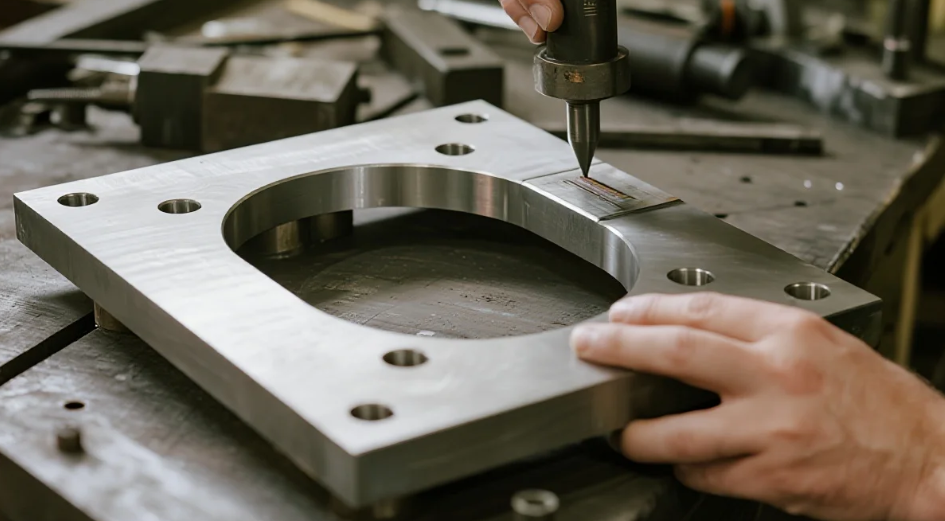Edifício 49, Parque Industrial Fumin, Vilarejo de Pinghu, Distrito de Longgang
Domingo Fechado
Quando você precisa serviços de fabricação de metais de precisão , a diferença entre um fornecedor genérico e um parceiro especializado muitas vezes reside na precisão, consistência e capacidade de resolver problemas. Em meus anos trabalhando com fabricantes, vi como a decisão de design mais simples — como um ajuste de raio de dobra de 0,2 mm — pode economizar milhares em custos de montagem posteriores.
Neste guia, vou mostrar o que realmente significa fabricação de chapas metálicas de precisão, como ela funciona na prática e como escolher o fornecedor certo para projeto de chapa metálica, peças e produtos .
A fabricação de metais de precisão é o processo de cortar, dobrar, soldar e acabar chapas metálicas de acordo com especificações exatas. Diferentemente da fabricação padrão, o trabalho de precisão exige tolerâncias tão rigorosas quanto ±0,05 mm.
Os serviços mais comuns incluem:
Design de metal laminado – Modelagem CAD, prototipagem e análise de manufaturabilidade.
Peças de chapa metálica – Suportes personalizados, carcaças, invólucros, painéis.
Serviços de Fabricação – Corte a laser, punção CNC, soldagem robótica, pintura eletrostática.
Produtos de chapa metálica – conjuntos para uso final prontos para instalação.
Exemplo: Um cliente do setor automotivo exigia caixas de Aço Inoxidável com proteção IP65. Ao redesenhar os orifícios de ventilação e mudar para corte a laser em vez de estampagem, melhoramos a consistência e reduzimos a taxa de sucata em 18%.

Em setores de alta demanda como aeroespacial, dispositivos médicos e eletrônicos, cada micrômetro conta.
Tolerâncias Apertadas garantem ajuste e funcionamento adequados.
Revestimento de superfície (pintura eletrostática, anodização, galvanização) proporciona durabilidade.
Repetibilidade reduz rejeições de qualidade e economiza custos com retrabalho.
Em um dos nossos projetos para um fabricante original de equipamentos médicos, o uso de dobramento CNC de precisão melhorou a eficiência de montagem em 27%, reduzindo o tempo de entrega de 15 dias para 11.
Uma boa fabricação começa na fase de design. É assim que normalmente abordamos:
modelagem 3D CAD – Verificação de folgas e acúmulos de tolerâncias.
Seleção de Material – Alumínio 5052 para carcaças leves, Aço Inoxidável 304 para resistência à corrosão, Aço Laminação a Frio para eficiência de custos.
Prototipagem – Amostras de corte a laser em baixo volume para testar funcionalidade.
Feedback de DFM (Design para Manufaturabilidade) – Sugestões de ajustes de raios, posicionamento de furos ou alívios de dobra que reduzem custos de ferramental.
Dica: Envolve sempre o seu fabricante no início do processo de design. Para um cliente de eletrônicos, mover os furos dos parafusos em apenas 3 mm eliminou a necessidade de furação secundária, economizando $1,20 por unidade em uma escala de 10.000 unidades.
| Processo | Melhor para | Tolerância Alcançada |
|---|---|---|
| Corte a laser | Formas complexas, entrega rápida | ± 0,1 mm |
| Furamento cnc | Peças de alto volume com furos repetidos | ±0,2 mm |
| Dobramento/Formação | Suportes, painéis, carcaças | ±0.5° |
| Solda robótica | Resistência estrutural e precisão | ±0,5 mm |
| Revestimento em pó | Resistência à corrosão, estética | Acabamento uniforme |
Esses serviços são frequentemente combinados em um único fluxo de trabalho para produzir produtos de chapa metálica prontas para montagem ou uso final direto.
Ao avaliar fornecedores, recomendo ir além do preço. Foque em:
CERTIFICAÇÕES – ISO 9001, IATF 16949 ou AS9100, dependendo do seu setor.
TECNOLOGIA – Máquinas a laser de fibra, dobradeiras automáticas, soldagem robótica.
Experiência – Histórico comprovado no seu setor.
Controle de Qualidade – Inspeção CMM, relatórios de peça inaugural, rastreabilidade de materiais.
Estudo de caso: Um comprador no setor de energias renováveis mudou-se para um fornecedor com sistemas automatizados de inspeção. Isso reduziu as devoluções por defeitos em 32%, reduzindo diretamente as reclamações de garantia.
P1: Qual é o prazo para peças de metal fino de precisão?
➡ Tipicamente 7–15 dias úteis, dependendo do volume e acabamento.
P2: Quais materiais podem ser fabricados?
➡ Metais comuns: Alumínio, Aço Inoxidável, Aço Carbono, Cobre, Titânio.
P3: Como obtenho um orçamento preciso?
➡ Forneça arquivos CAD 3D (STEP/IGS) com tolerâncias, materiais e detalhes de acabamento.
Copyright © Shenzhen Perfect Precision Products Co., Ltd. Todos os direitos reservados — Política de privacidade—Blog